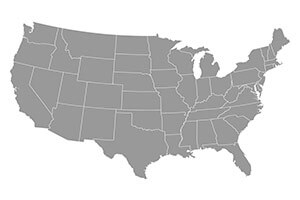
UNITED STATES
During the fall season beekeepers were finishing their extracting and bottling in preparation for holiday sales. Most reports indicated fair to good retail sales, but some reporters said they noticed that grocery store retail prices had declined some. Bulk domestic wholesale honey movement continues to collide with increased imports of cheaper foreign honey, although small-lot sales are still reported to be mostly strong. A number of beekeeper groups are calling for stricter enforcement of country of origin labeling for retail honey sales.
Colonies were going into winter with average to good bee populations. However, a number of reporters were worried about winter stores and had begun serious feeding efforts to prevent large-scale colony starvations this winter and early next spring. The first part of fall was rather mild and warm. Beekeepers in the Intermountain and West areas were hoping for good rains and snows this winter to help replenish ground moisture and irrigation reservoirs.
NORTHEAST
Beekeepers were finishing their fall feeding and mite treatments as this was written. In short crop locations, beekeepers will need to keep a close watch on colonies through the latter winter months to prevent starvation. Earlier in the season some beekeepers reported large bee populations, but very little in the way of late flows to provide needed winter stores. Showers and cooler weather had come with the fall season. The rain was welcome in locations that had been dry through the summer months. Many beekeepers sell much of their honey during the months of November and December for home baking as well as gift-giving. Some small-lot batches of wholesale honey continue to sell well, but larger lot honey prices and demand are suffering from foreign honey competition.
MIDEAST
Holiday honey sales were in full swing as beekeepers prepared for brisk sales. Some reporters, however, said they had sold out earlier in the year due to the excellent demand for locally produced honey. Honey crop reports were mixed this season. Beekeepers were also finishing their feeding and mite treatments. Due to the warmer weather, some beekeepers said that both varroa mite and small hive beetle populations were higher than normal. A few beekeepers did not discover this soon enough and lost colonies to these pests. Parts of the Mideast are still on the dry side, but a few good drenching rains this fall have helped soil moisture levels. Some beekeepers reported apiary flooding or storm damage from Hurricane Matthew.
SOUTHEAST
Many beekeepers said that they avoided major flooding and storm damage from Hurricane Matthew along the eastern coast. Some beekeepers did have damage, however, and others said that the storm disruption hurt their important Brazilian pepper flow. Beekeepers in the hurricane’s path took the warnings to heart and actually moved entire beeyards or in other cases tried to secure hives on location with various tie-down methods.
Bees were still working the last of the Brazilian pepper, Spanish needles and goldenrod in Florida as this was written. Nevertheless, many colonies will need to be fed. Colony populations are strong and bees were generally thought to be doing well for this time of year. By December and January, early maple and other pollen will be available to stimulate next season’s brood rearing. As usual, thousands of colonies have been transported to the Southeastern states for overwintering and early buildup.
Many beekeepers were still actively seeking buyers for their new crop honey. Wholesale prices continue to be depressed due to competition from cheaper imported honey. Retail sales have picked up significantly with availability of new-crop honey and the holiday season approaching.
SOUTHWEST
Honey crops were fair to good over much of this area. Erratic weather at times hurt spring flows. Beekeepers were currently busy feeding and equalizing colonies, as well as finishing mite treatments. Small hive beetles continue to be a big problem in some locations, but beekeepers are learning to cope with them. A number of minor flows continue from goldenrod, aster, bitterweed, black-eyed Susan, Spanish needles, etc. Colonies generally had good bee populations going into the winter months. In the desert Southwest, rains had brought on desert wildflower flows in some locations. Migratory beekeepers were finishing their move to overwintering locations in the Southwest where they will be able to build up early to make divides before being moved to pollination jobs or northern honey flows.
Beekeepers were actively working to bottle and sell their new crop honey. Retail sales are good and are expected to continue at a good pace through the holiday season. Meanwhile, wholesale honey prices continue to face increasing competition from cheaper foreign honey, which is hurting demand and pricing.
EAST CENTRAL
Quite a few beekeepers were worried about winter stores and many had started feeding in the fall after discovering mostly empty brood chambers. Various reasons for the shortage were given. In Michigan and Ohio drought was blamed for spotty flows. In parts of Wisconsin and Michigan, later summer and fall flows were quite poor. Wisconsin beekeepers blamed erratic weather such as frequent rains. In Illinois, spring flows were generally good and beekeepers …


